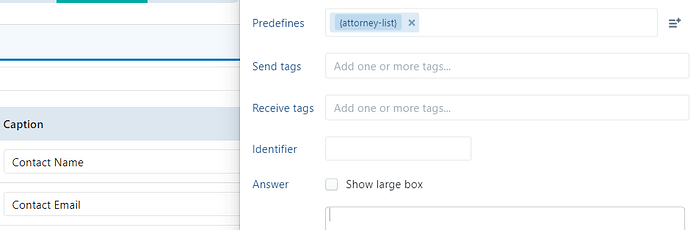Hello everyone,
I have been using normal global placeholders for some time now. However, I have not figured out how to get global placeholder tables working, even after looking at the documentation.
I have created a global placeholder table called attorney-list, and added the columns name and email:
I have added some test data:

What I am trying to figure out is how to get my data as a predefine in a Q&A Table Question. In the table options, I selected the Global Placeholder Table under Predefines>Placeholder
This is how I have gotten non-table global placeholders to work in other Q&A Table-Questions. But in the example above, I get nothing. I am obviously missing something here:
- How does the Q&A know which global-placeholder-table-collumn to pull the data from?
- Is there a way to connect the entries of the two columns? If I select “Name A”, I want to automatically select “Email A” for the next row. How would I do this?
Thanks for any help!
Best
Kai

